Beggars and Artisans: A Cultural History of Cork’s Franciscan Friary / Images as Narratives: Mosaics in St Francis Church, Cork
- Elaine Harrington
- May 27, 2021
Student Exhibition, MA in Medieval History
Images as Narratives: Mosaics in St Francis Church, Cork
The figural mosaics in St Francis Church depict different scenes, yet they are all tied together by the unifying theme of life. This is most clearly illustrated in the apse mosaic, where the main image is divided into three zones: the first showing Christ in Majesty attended by angels and representing life in heaven, the second including eight saints, who connect their life on earth with the heavenly court, and the third zone with the images of the four elements of fire, earth, water and air depicted in the lower section of the apse. All the mosaics that appear in the church were designed by an Italian artist, Professor Umberto Noni from Rome and executed by Commendatore Tullio Monticelli.
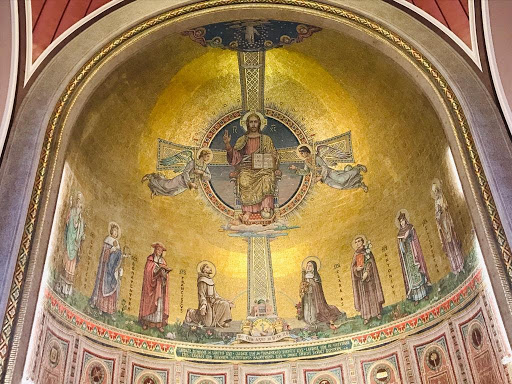
Accompanying the main apse mosaic are the mosaics displayed as backdrops to the side altars, which are dedicated to the Sacred Heart, St Francis, Our Lady and St Joseph. In the altar of the Sacred Heart, Christ stands upright with a hand placed on his heart which emits golden rays. Two angels are holding his cloak aloft. The altars of Our Lady and St Joseph are found side by side, reminding the viewer of their spiritual attachment to one another. Mary is depicted with outstretched hands and flanked by two angels. St Joseph is pictured against the backdrop of a starry night sky, he is shown standing and protecting the young Jesus.
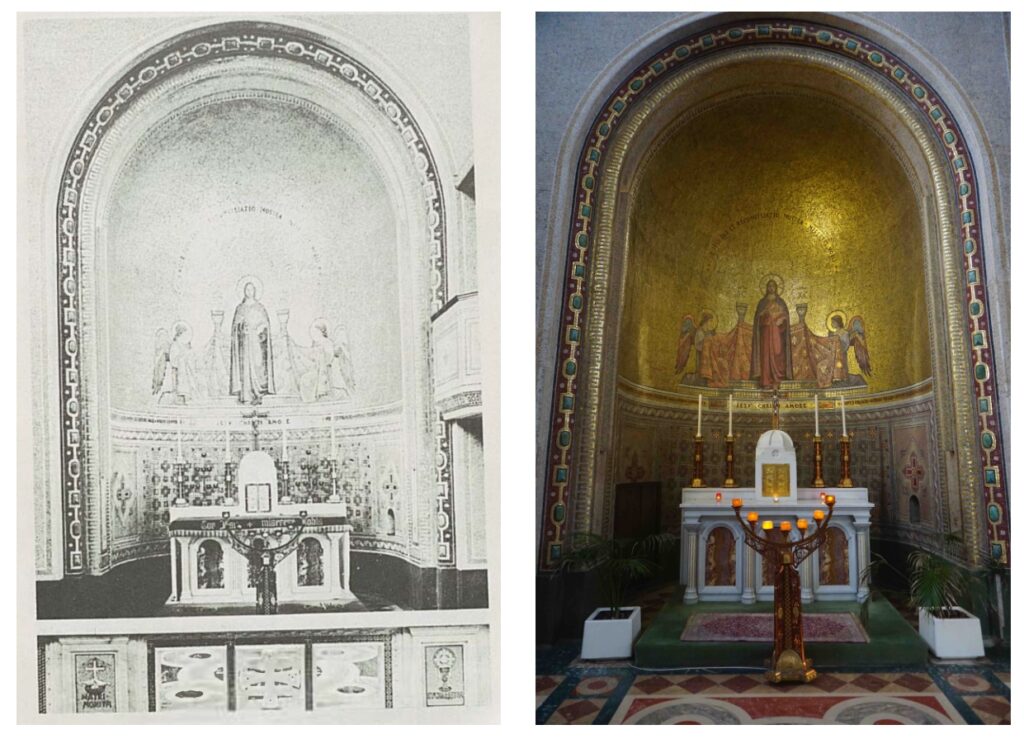
Right: Altar of the Sacred Heart, St Francis Church, Cork. Photo: Małgorzata Krasnodębska-D’Aughton.
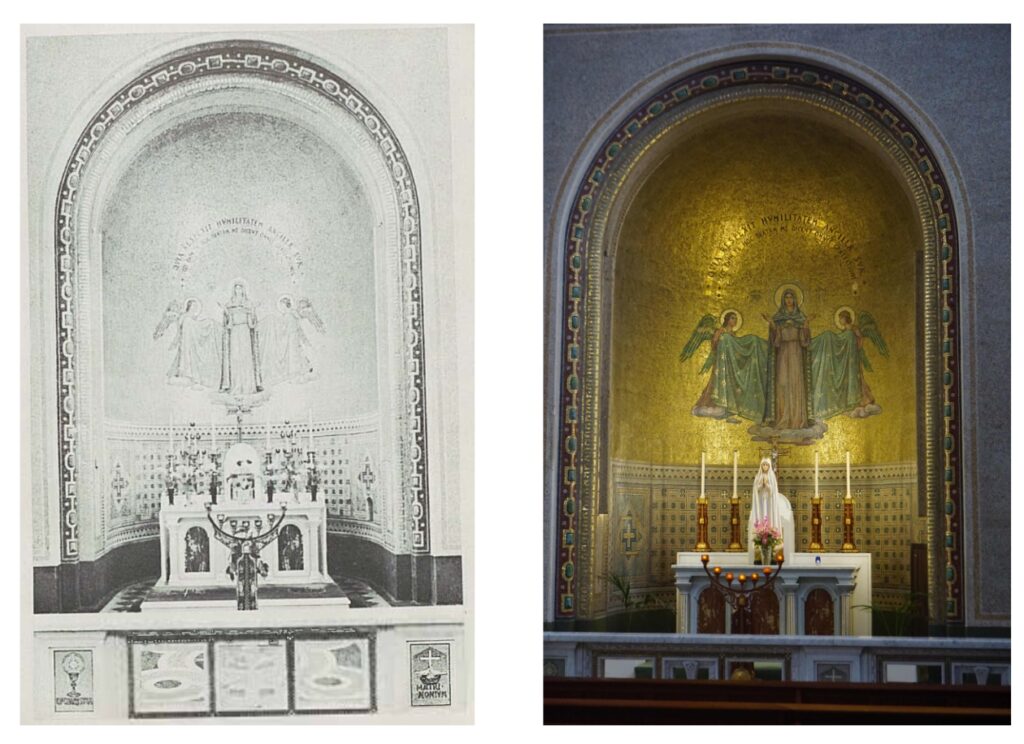
Right: Altar of Our Lady, St Francis Church, Cork. Photo: Małgorzata Krasnodębska-D’Aughton.
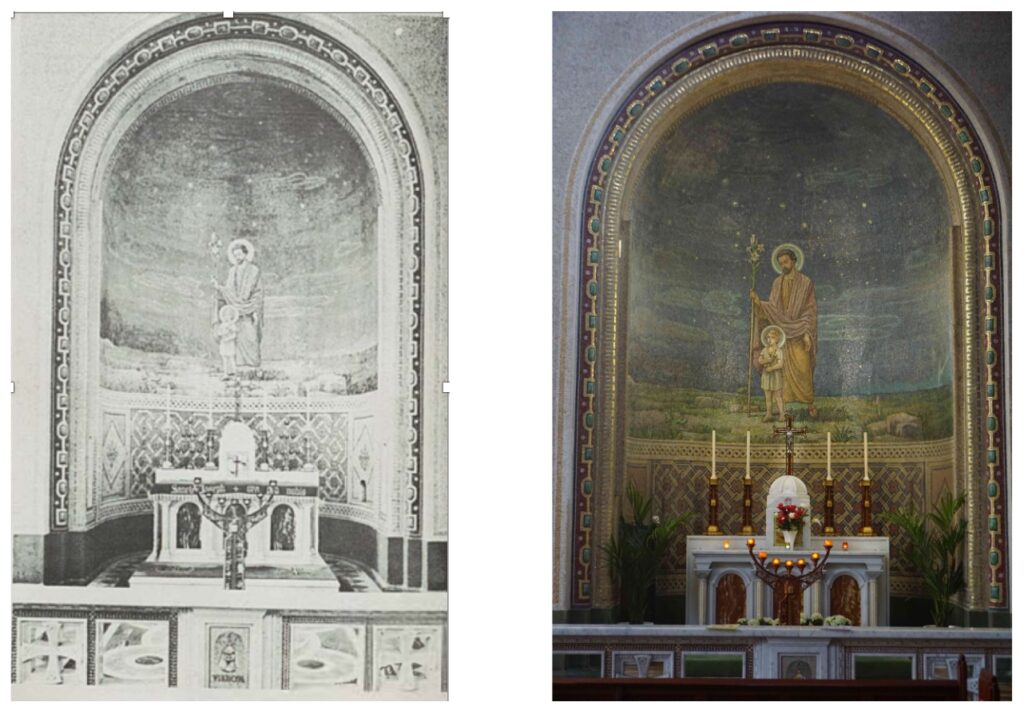
Right: Altar of St Joseph, St Francis Church, Cork. Photo: Małgorzata Krasnodębska-D’Aughton.
St Francis, who is the patron saint of the church, is represented twice in mosaics: in the main apse and in one of the side chapels. Unlike in the apse mosaic, where Francis kneels before Christ, bearing the stigmata in a position of reverence, here he is represented in a more relaxed attitude with open arms. He kneels and seems to converse with a wolf and a lamb shown next to him. A small copy of the San Damiano Cross is tucked into the cord tied around his habit as a reminder of the story of St Francis being spoken to by the cross. This account is described in more detail in the blog post titled ‘From Assisi to Cork’. The scene is set in a simple, rural setting, a stream flows across the bottom of the image with flowers growing along its banks. Behind St Francis is a tree with different types of birds nesting in it and the words of the Franciscan motto ‘pax et bonum’ (‘peace and goodwill’) are intertwined through the branches.
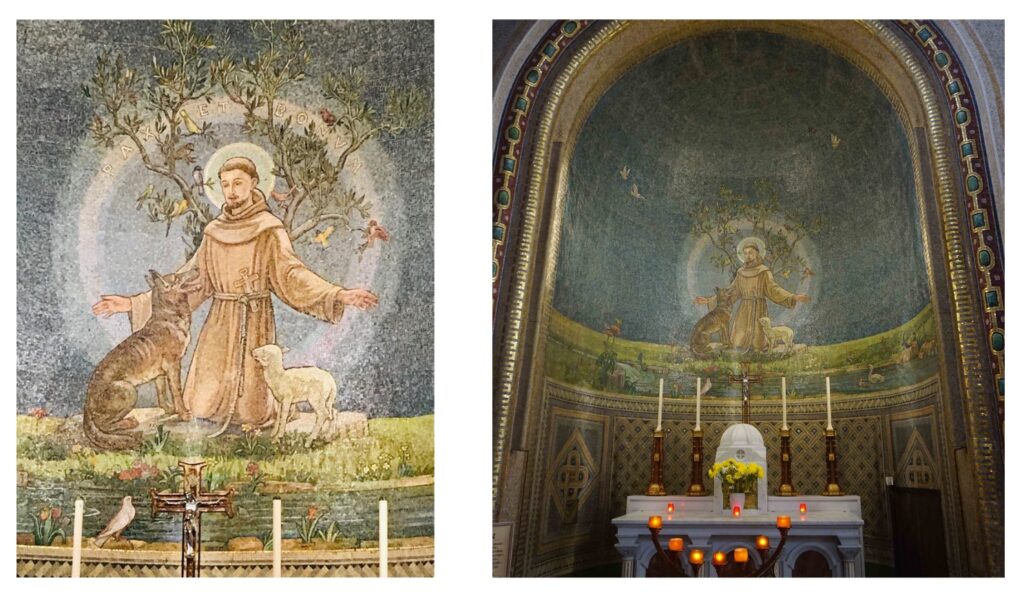
Right: Altar of St Francis, St Francis Church, Cork. Photo: Martha Ewence.
The mosaic of St Francis with animals is an artistic interpretation of the Legend of the Wolf of Gubbio. The story is told in the so-called Little Flowers of St Francis, a text composed after 1337, over a century after the death of the saint. The event took place when Francis was leading an ascetic life, living simply with his companions, wandering from town to town, preaching and begging for alms. In Franciscan Cork, Jerome O’ Callaghan retells the story and describes how the townspeople of Gubbio had been terrorized by a wolf and sought help from Francis. When the saint found the wolf, he blessed him and assured the animal that he would have plenty of food if he refrained from attacking the town. Miraculously, the wolf placed his paw in the hand of St Francis and nodded in agreement. From then on, the wolf went from door to door asking for his food and became a friend of everyone in the town, so much so that the townspeople grieved on his death two years later. There is even a suggestion that the wolf was given a burial as there is evidence that the remains of a wolf were found in 1872, when Gubbio’s church was undergoing building work.
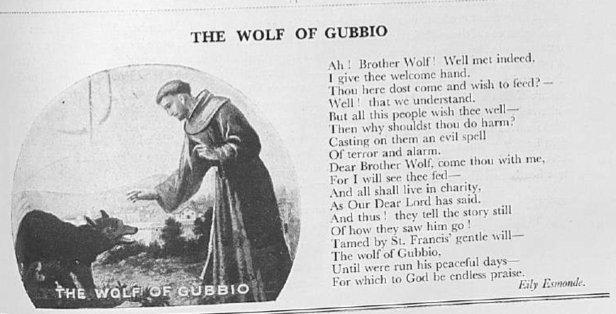
Since it was first recorded in the fourteenth century, the story about the wolf of Gubbio has captured the imagination of artists and writers alike. A series of paintings created for the San Sepolcro Altarpiece in 1444 represents scenes from the life of St Francis and includes an image of the saint holding the paw of the wolf to the great astonishment of the townspeople gathered behind him. Stefano di Giovanni di Consolo also known as Sassetta (d. c. 1450) is the artist and seven of the scenes from the altarpiece are on display in the National Gallery in London.
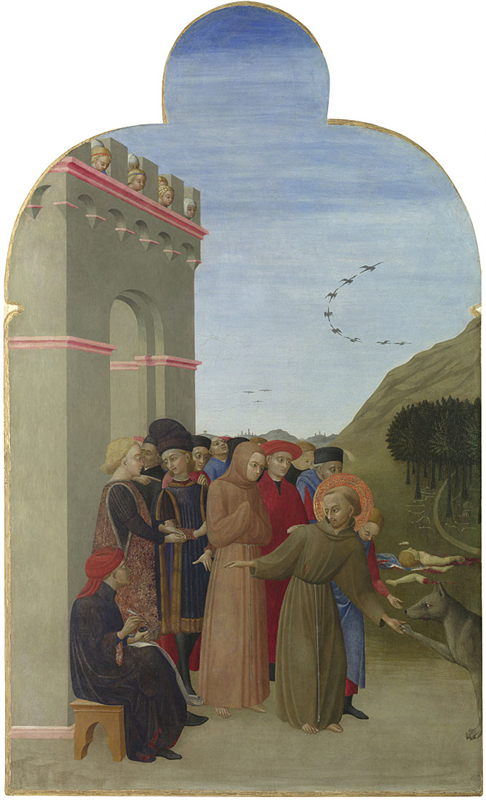
In his Life of St Francis, composed c. 1228-1229 to commemorate the canonisation of Francis, Thomas of Celano (d. 1260) stresses Francis’s love for all creatures and the way Francis, through his own experience, taught others to follow him in this regard. On one occasion, Thomas of Celano describes how ‘after the birds had listened so reverently to the word of God, he [Francis] began to accuse himself of negligence because he had not preached to them before. From that day on, he carefully exhorted all birds, all animals, all reptiles, and also insensible creatures, to praise and love the Creator’.
In 1979 St Francis was declared the patron saint of those who promote ecology.
Martha Ewence
Further reading
Billinge, Rachel, ‘Some Panels from Sassetta’s Sansepolcro Altarpiece revisited,’ National Gallery Technical Bulletin 30 (2009), 8–25.
O’ Callaghan, Antóin, The Churches of Cork City: An Illustrated History (Dublin, 2016).
O’ Callaghan, Jerome, Franciscan Cork: Souvenir of St Francis Church, Cork (Killiney, 1953).
Francis of Assisi: Early Documents, ed. Regis J. Armstrong, J.A. Wayne Hellmann and William J. Short (New York, 1999-2001), vols 1-3.
Poland, Pat, ‘Heavens Above! Cork Church is 65 Years Old’, The Evening Echo, 12/07/2018.
St Francis Church: An Illustrated Guide (Cork, 1961).
Vauchez, André, Francis of Assisi: The Life and Afterlife of a Medieval Saint, translated by M.F. Cusato (New Haven, 2012).
